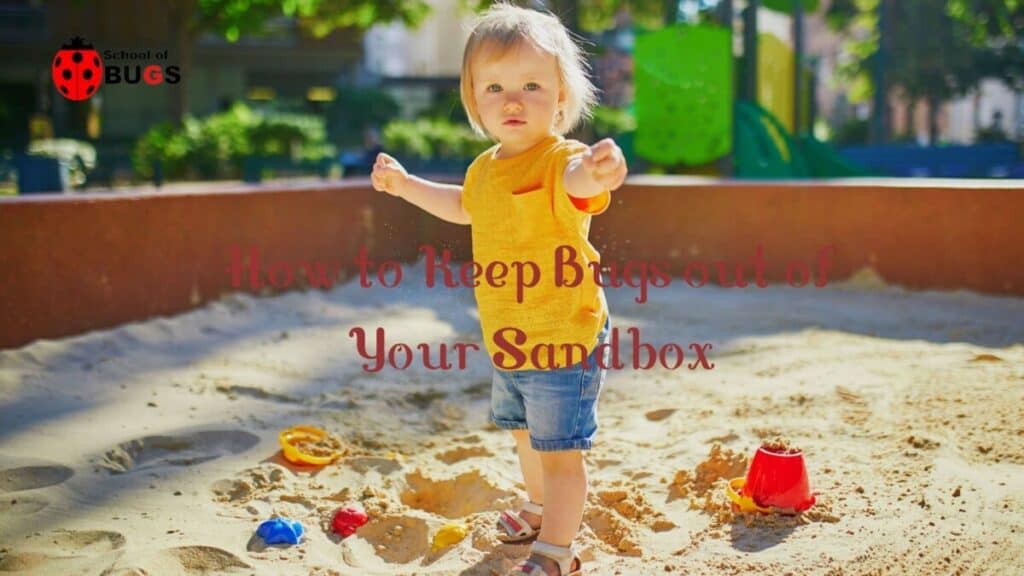
Sandboxes can be great for creative backyard fun, especially in the summertime, when it’s warm and the kids are home for the summer.
However, if you don’t take proper preventative care for keeping uninvited guests like ants, beetles, and other common pests from making their homes in the sand, the fun can be short-lived.
Insects may not only frighten your kids from playing in the sand, but they can also be quite harmful – depending on the pest.
Stinging insects can cause painful bites, and some bugs can pose sanitation issues.
Fortunately, there are several tried and true methods for keeping your sandbox pest-free and ready for the kids at any time. The most effective methods are:
- Keep the sandbox covered
- Line floor of the sandbox
- Use sanitized play sand
- Churn the sand regularly
- Add cinnamon to sand
- Tackle weeds
- Change out the sand
- Use non-toxic bug repellant
- Keep food and drinks out of sandbox
- Eliminate hiding places
The rest of this article will tell you everything you need to know about keeping your sandbox clean, safe, and free from bugs.

How do I keep bugs out of my sandbox?
1. Keep the sandbox covered
Most store-bought sandboxes come with a lid that fits snugly over the top when the sandbox is not in use. If you have a homemade sandbox, make a lid that fits or use a tight-fitting tarp.
Keep in mind that a tarp might not be as effective in keeping out pests as a tight-fitting lid.
A well-fitting lid keeps rainwater and dew from accumulating in the sand, as moist sand is a hotbed for bacteria and bugs.
Covering the sandbox also keeps feral cats from getting into the sandbox and using it as a communal litterbox. Animal droppings are known for attracting bugs and even carrying dangerous parasites.
A great way for a DIY tent that keeps bugs and moisture out is to make a sandbox out of a small tent. Then, when your children are done playing in the sandbox for the day, simply zip up the tent.
A tent sandbox simultaneously solves the need for a lining and a lid. It also provides shade for your kiddos on those hot summer days.
2. Line the floor of the sandbox
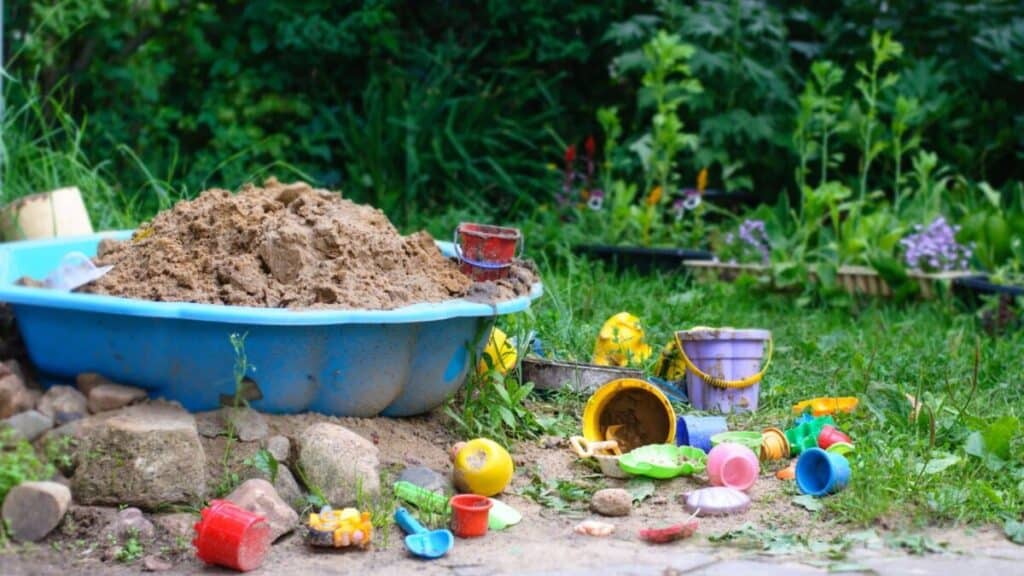
It’s highly discouraged to have the bottom of the sandbox in direct contact with the ground, as many pests move through the soil and can easily find their way into the sandbox while dodging many of the preventions you set up.
Plastic sandboxes, especially those from the store, come with a thick plastic floor.
If you have a homemade sandbox, you can use a cloth that allows for proper drainage, such as landscape fabric or a painter’s cloth. It also prevents weeds from growing up through the sand.
If using a plastic tarp as a lining, make sure to poke some small holes throughout to allow adequate drainage.
3. Use sanitized play sand instead of natural sand
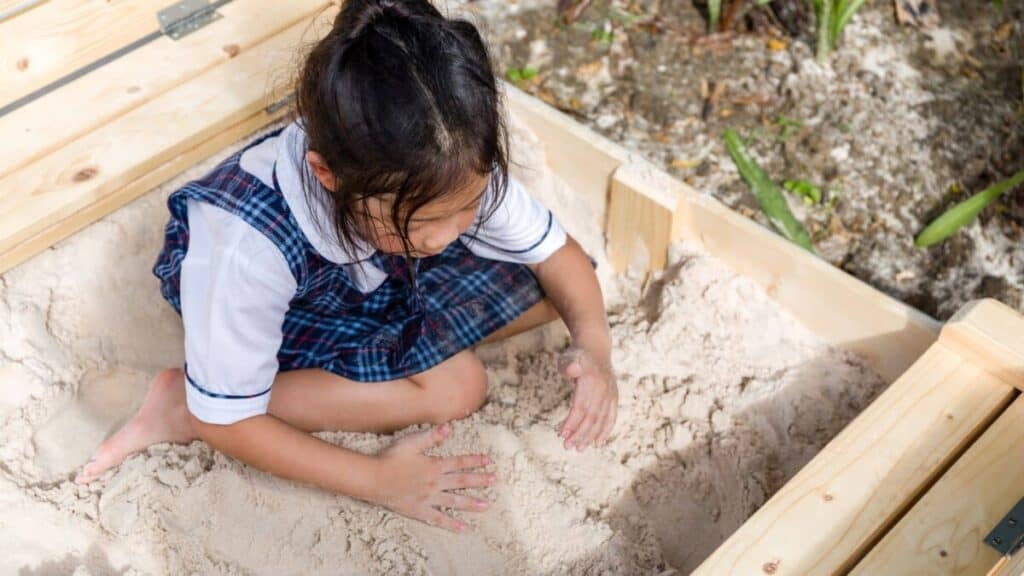
There is a big difference between natural, untreated sand and the sand used in sandboxes. Natural sand isn’t sanitized and can attract bugs and foster bacteria growth.
Sanitized play sand is specifically made for children’s sandboxes and play areas and is treated to inhibit bacteria growth.
Play sand is sold in 10 – 50 lb. bags in most hardware stores, such as Home Depot, Lowe’s, and Ace Hardware.
4. Regularly churn the sand
If you allow the sand to settle, you can unintentionally be creating a home for insects.
Regularly churning the sand, even during periods when your children aren’t playing in it (such as back to school season), chases away any insects that have found their way into your sandbox and discourages more from burrowing into the sand.
Churning the sand also helps you find out whether you have bugs in the sand before your kids find them. Use a shovel to turn the sand throughout the sandbox for a thorough churning.
5. Add cinnamon

While it may sound odd, adding cinnamon to the sand is a safe and natural way to repel bugs from your sandbox. For standard-sized sandboxes, mix in about 1 cup of ground cinnamon to the sand.
Ants, mosquitoes, silverfish, flies, ticks, and other common backyard pests don’t like cinnamon and will keep away from sand treated with the spice.
Mix cinnamon regularly into your sandbox to keep most bugs away. Add more every time you churn the sand, that way it is easy to remember when you last added it.
6. Tackle weeds
Even though your sandbox may have a lining that keeps weeds from sprouting up through the sand, tall weeds around your sandbox can attract bugs and other pests – such as snakes and rodents – close to your sandbox.
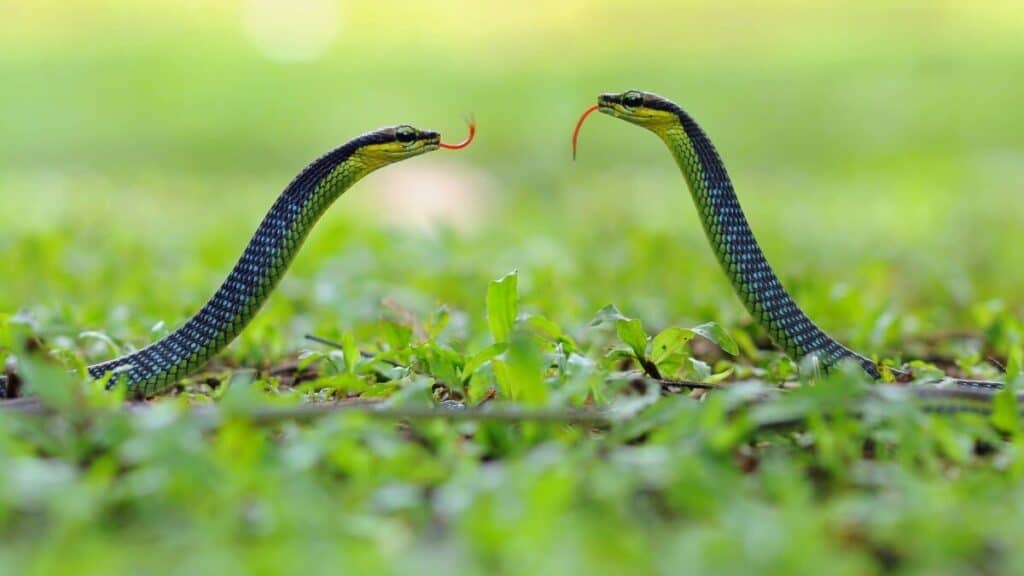
And the closer weeds are to your sandbox, the more likely it is that pests will find their way inside.
A good rule of thumb is to have a few feet of short, weed-free grass around the perimeter of the sandbox.
7. Regularly change out the sand
Periodically change out the old sand with new play sand. This doesn’t have to be done as frequently as churning or adding cinnamon, just about every season or so.
This way, you’ll avoid having an infestation of bugs that might have burrowed inside the sandbox during the winter.
When you change out the sand, it is also a good idea to survey the condition of the sandbox itself.
If you have a homemade sandbox made of wood, the sides might have become cracked from the weather and the liner might have deteriorated.
If so, it’s best to replace all the worn parts to avoid bugs coming in for the new season.
8. Use a safe, non-toxic bug repellent around sandbox’s perimeter
While cinnamon is a great way to keep bugs out of your sandbox, it is always best to have a second line of defense as far as natural bug repellents go.
Safe, effective, plant-based repellents are sold at hardware stores and anywhere gardening supplies are sold.
The only catch is that you’ll have to apply it consistently for it to be effective. A good frequency is to apply the bug repellent around the perimeter every day.
9. Keep food and drinks out of sandbox

Nothing attracts bugs more than dropped snack crumbs and sugary dripping from juice boxes.
Establishing the rule of having no food and drinks allowed in and around the sandbox is an effective method to preventing bugs from making their homes in your sandbox.
This rule isn’t just for the kids – avoid feeding your pets or having their dishes near the sandbox, and make sure any birdfeeders are well out of the sandbox’s vicinity.
Dogs and cats leave food residue that attracts bugs, even in their water dishes, and even so much as a few scattered seeds and a sugary syrup from a hummingbird feeder can result in an infestation in your sandbox.
10. Eliminate hiding places
Whenever bugs are scoping out areas for a potential home, any place with shelter is sure to be ideal. If you have an old sandbox with a wood frame, bugs can hide in the cracks and crevices inside weathered wood.
Even store-bought plastic sandboxes can become cracked with age, so make sure to regularly inspect your sandbox and promptly fix or replace it if it shows signs of damage.
How do I get rid of bugs already in the sandbox?
While the measures listed above are perfect for preventing bugs from entering your sandbox, what do you do if you already have an infestation on your hands?
If you are trying to get rid of an existing bug problem in your sandbox, don’t panic. All you need to do is follow these steps.
- Change sand
- Apply pesticide
- Clean the sandbox
Change sand
First things first – dump out and dispose of all the sand in your sandbox.
Once there is an insect infestation, there is no salvaging the sand since it likely contains eggs, larvae, and bacteria that will only make your pest problem worse.
Apply pesticide
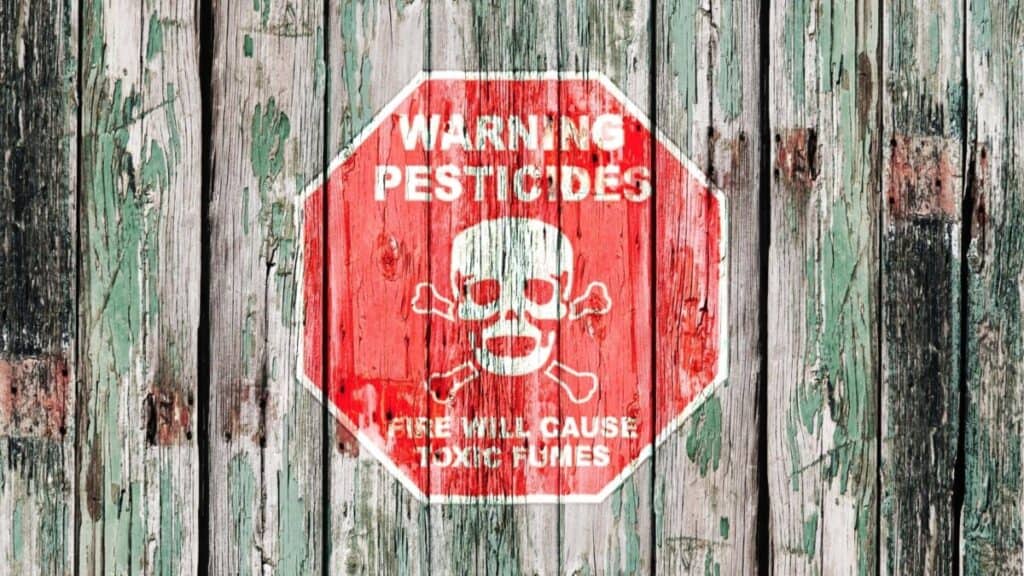
After dumping the old sand, spray the entire sandbox with pesticide. If you have a sandbox made of wood, don’t forget to get all the nooks and crannies in the wood.
The pesticide will eradicate any eggs or larvae sticking around.
Let the pesticide sit for about two days – this way, it can take full effect.
Clean the sandbox
After two days, thoroughly clean the sandbox with soap and water. This will remove any residue from the pesticide and give you a nice clean sandbox to work with.
Follow preventative measures
After the sandbox is clean and dry, line the floor of the sandbox and place new, sanitized play sand inside. Mix in cinnamon, apply non-toxic bug spray to the perimeter, and make sure to have a lid with a snug fit with which to cover the sandbox when not in use.
Make sure the sandbox is fully dry before adding the new sand, as moisture attracts bugs and fosters the growth of bacteria.
Alright, that’s it for this article, here are a few hand-selected articles that you might also find interesting reads:
How To Keep Bugs out of Your GreenhouseHow to Keep Bugs Out Without Door Screens
How to Keep Bugs Out of Your Compost Bin
Recent Posts
Tiny Black Bugs in Bathroom NO WINGS: What They Are and What to Do!
Finding tiny black bugs in your bathroom can be uncomfortable, to say the least. Especially if they are persistent, or they appear in very large numbers, which they often like to do. When it...
Tiny Black Bugs in Plant Soil - What Are They & What To Do About It
A short horror story: You get a new houseplant. You do your best to take care of it. You’ve ensured that it has the right soil, the right amount of sun, it gets enough water. And then one day, you...

